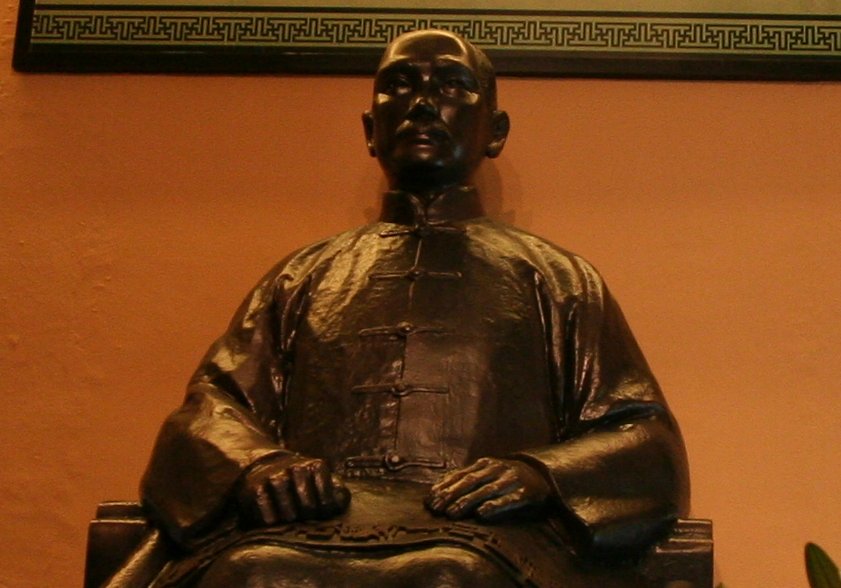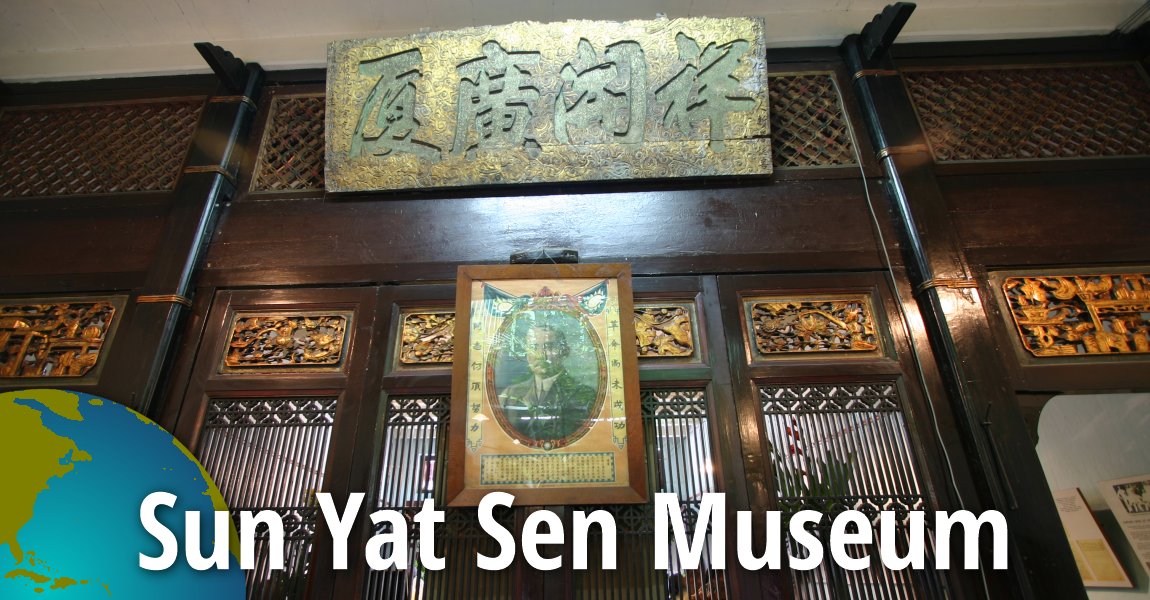 Portrait of Dr Sun Yat Sen (4 February 2006)
Portrait of Dr Sun Yat Sen (4 February 2006)
The Sun Yat Sen Museum (GPS: 5.415787, 100.336117) is a privately managed museum at 120 Armenian Street, in George Town, Penang. It occupies the shophouse where Dr Sun Yat Sen had his base while in Penang. The building was erected in the 1870's and bears witness to events that shaped world history, particularly that of China.
From the outside, the Sun Yat Sen Museum may may appear stark when compared to the ornate architecture of the clan temples down the street, the drab appearance is probably deliberate, to ward off uncalled-for attention from the authorities over the activities that Dr Sun was hatching there. While it looks like a typical George Town shophouse, the things that happened in it is anything but typical.
Visitor Information
Sun Yat Sen Museum 120 Armenian Street10200 Penang
Phone: +60 4-262 0123
Email: sunyatsenpenang@gmail.com
Website: sunyatsenpenang.com
Opening Hours:
9:30 am to 5:30 pm daily
Admission: RM5 per person, RM3 for students upon showing student card
Free in-house guided tours are available at specific times. Tours are conducted in English, Mandarin, Malay and (by prior arrangement) Thai.
About the Sun Yat Sen Museum
It was here that plans were made that eventually brought down the Qing Dynasty Government and turned China into a republic. Amazing but true, that the activities that took place in this nondescript shophouse has a greater impact on world events that most people in Penang as well as those living within its immediate neighbourhood would realise.I think the name Dr Sun Yat Sen will ring a bell among older people - thougyh I recently conducted a tour for school students of the heritage enclave, and am pleasantly pleased to learn that they know who Sun Yat Sen is. For those who don't, Dr. Sun Yat Sen, also known as Sun Chong San, is reverred in both China and Taiwan as the architect of the new, republican China. Disgruntled by an imperial China ruled by the Manchu court that he considered inefficient and corrupt, Dr Sun founded the Tung Meng Hooi (also written as T'ung Meng Hooi).
The Tung Meng Hooi is a political party founded in 1905 in Tokyo with an agenda to turn China into a republic. Dr Sun travelled to various Chinese communities scattered around the world to drum up support for his movement to create this China sans Emperor. In 1909, the Southeast Asia headquarters of the Tung Meng Hooi was moved from Singapore to Penang, where it remained till 1911.
The decision to use Penang was swayed by the support Dr Sun received from the Chinese community here. I gather he would not be successful without the weight of support from his Penang contemporaries - Sino supremos like Cheong Fatt Tze and perhaps Kapitan China Chung Thye Pin. (Read footnote) Both were decorated figures in the Qing Dynasty court. Supporting Dr Sun would amount to treason to the emperor.
Still, I believe that Cheong Fatt Tze had reconciled that the bureaucracy of a weak China - a basket case at the mercy of European forces - is not good for business, and a modern China is the way forward. So even if they could not openly support Dr Sun, some form of backdoor support must have been forthcoming. Probably due to this, when Dr Sun's revolutionaries managed to overthrow the imperial government, Cheong Fatt Tze was awarded a position in the newly formed government.
Kampung Kaka and Kampung Kolam are not the neat, spacious, sunny neighbourhoods that you would know today. In the 1910's, the area within earshot of the Kapitan Keling Mosque's azan was hemmed with stalls, stores, sheds and bullock carts, all providing ample nooks and crannies to hide and worm away.
But why chose a shophouse in this rather obscure corner of town as the Tung Meng Hooi headquarters? We need to understand that at that time, much of the activities of the Tung Meng Hooi is considered "underground" - what else would you call a party whose purpose is to overthrow a government? At any time at all, the authorities may raid the premises, so the choice of neighbourhood has to be one that provides easy escape when the need arises. The backdoor of this elongated shophouse opens into the Indian Muslim neighbourhoods of Kampung Kaka and Kampung Kolam.
I can't begin to provide you a true mental picture of this place in the early 20th century: walk the streets in Jaipur or Agra, and you'd get the idea. Now, the Muslims of Kampung Kaka, Kampung Kolam and the adjacent Kampung Aceh and Pitt Street are probably aware of what's transpiring within their midst. Dr Sun and his people don't look like the typical Chinaman. They wear Western attire, and certainly no pigtails (towchang) for them - these they have snipped off as a symbolic separation from imperialism. To the Muslims, Dr Sun Yat Sen and his followers are the "Orang Cina Potong Towchang" (Chinamen without pigtails).
At the Tung Meng Hooi's Penang Conference that took place at 120 Armenian Street on 13 November 1910, the Canton Uprising was planned. During that time, the premises served as the Penang Philomatic Union, a reading club that served as a front for the revolutionary activities. It is the second of two important Tung Meng Hooi conferences held in Penang, the first was at Dr Sun's Dato Keramat Road office. Although the Canton Uprising was unsuccessful, it marked the turning point in Dr Sun's nationalist revolution, which culminated with the establishment of the first republic in Asia.
In that year (1910), Dr Sun Yat Sen lived in Penang for about six months together with his family, including his second wife Chen Cui Fen - not at 120 Armenian Street, but at his office in Dato Kramat Road which has since been demolished. The house in 120 Armenian Street was used as his base, and his followers did live there.
The Kwong Wah Jit Poh newspaper was started by him and his followers there, in 1910. It moved to 16, Malay Street, in 1913. Today it holds the distinction of being one of the oldest Chinese language newspapers in the world. Dr Sun moved the base for the Kwong Wah Pao from Yangon to Penang; he relaunched and renamed it Kwong Wah Jit Poh, making it a daily newspaper, and used it as a vehicle for spreading nationalistic propaganda. During that time, the house was owned by Lim Boon Yeow, and taken over in 1926 by merchant Ch'ng Teong Swee, who later used it as the godown for his company Ch'ng Eng Joo. The company signboards still hang in the living room of the house.
Today 120 Armenian Street is maintained as the base for Areca Books and Lestari Heritage Network by Ch'ng Teong Swee's granddaughter, writer Khoo Salma Nasution (nee Khoo Su Nin) and her husband.
Dr Sun never lived long enough to see his republic consolidate its power. For good or otherwise, his legacy is a China without an emperor, two China's in fact, and the political geography of over a billion people that was shaped within the walls of a humble shophouse in Penang.
Getting there
Take the Rapid Penang Bus Nos. 10, 103, 301, 302, 308 and 401 Jalan Masjid Kapitan Keling, walk down the road to the junction of Lebuh Armenian, then turn right. 120 Armenian Street is on the right side of Lebuh Armenian, about 80 meters from the junction.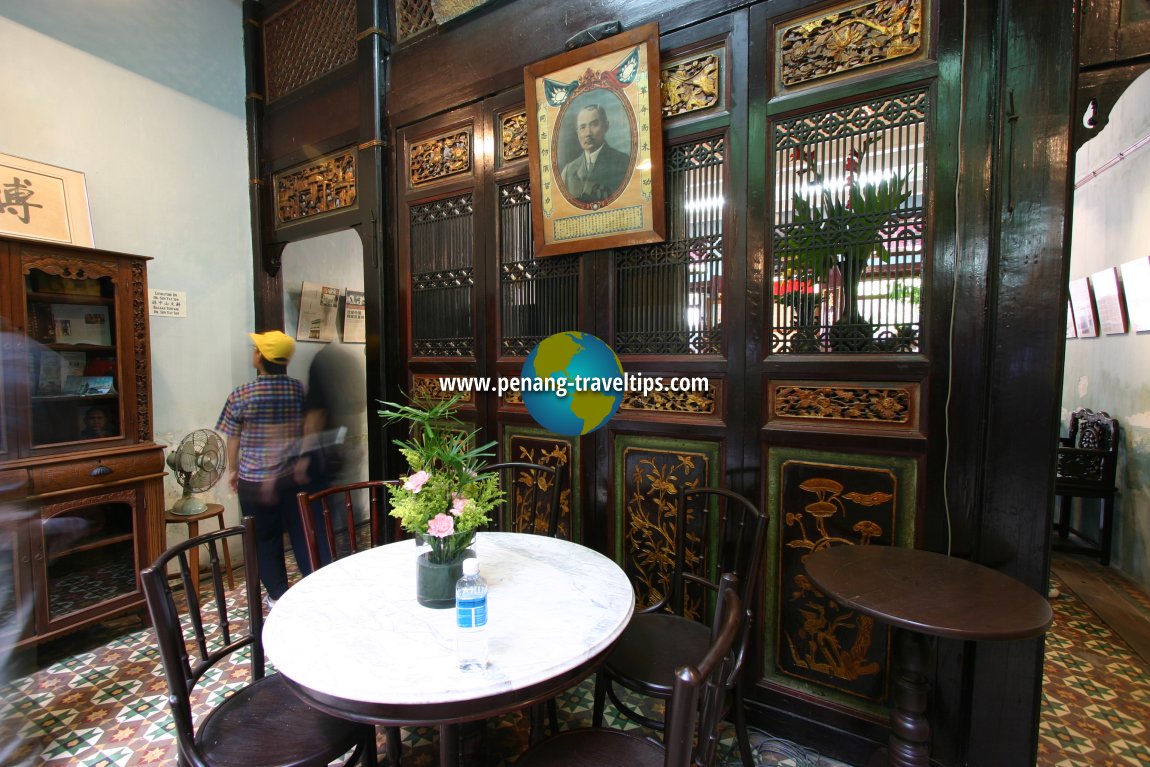 120 Armenian Street, George Town, Penang (4 February 2006)
120 Armenian Street, George Town, Penang (4 February 2006)
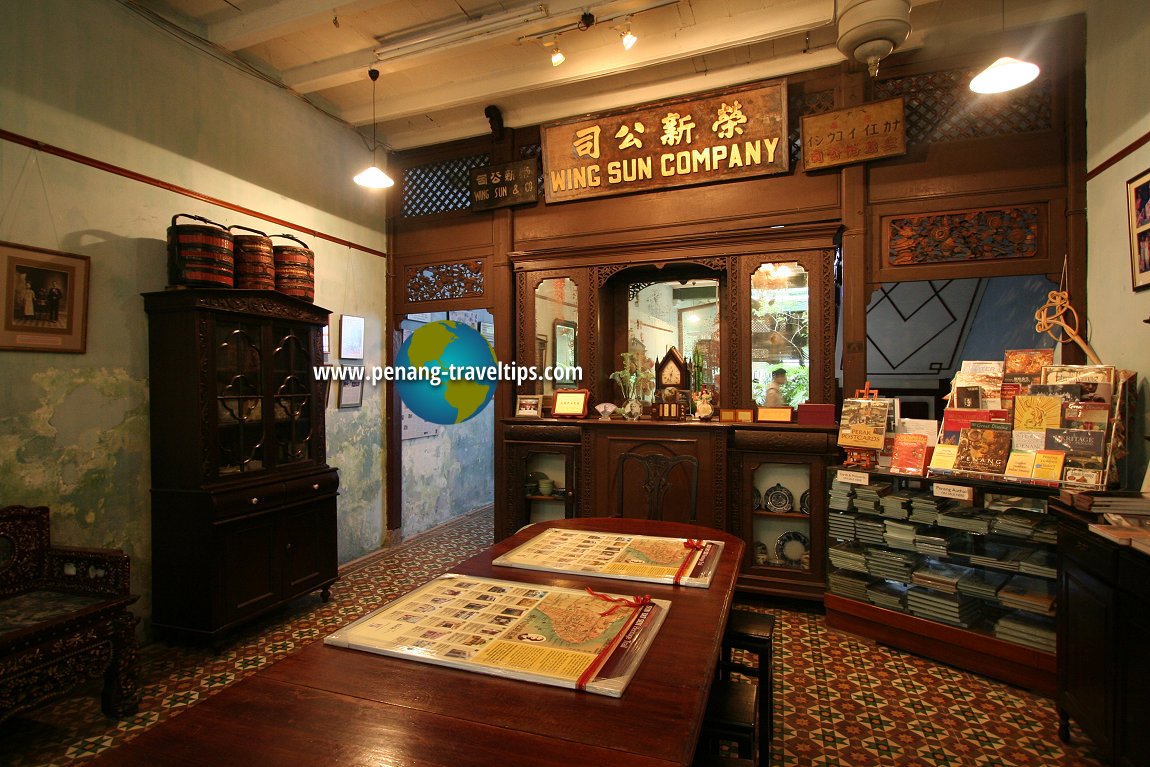 The dining hall at 120 Armenian Street, with the former company plaque (20 November 2010)
The dining hall at 120 Armenian Street, with the former company plaque (20 November 2010)
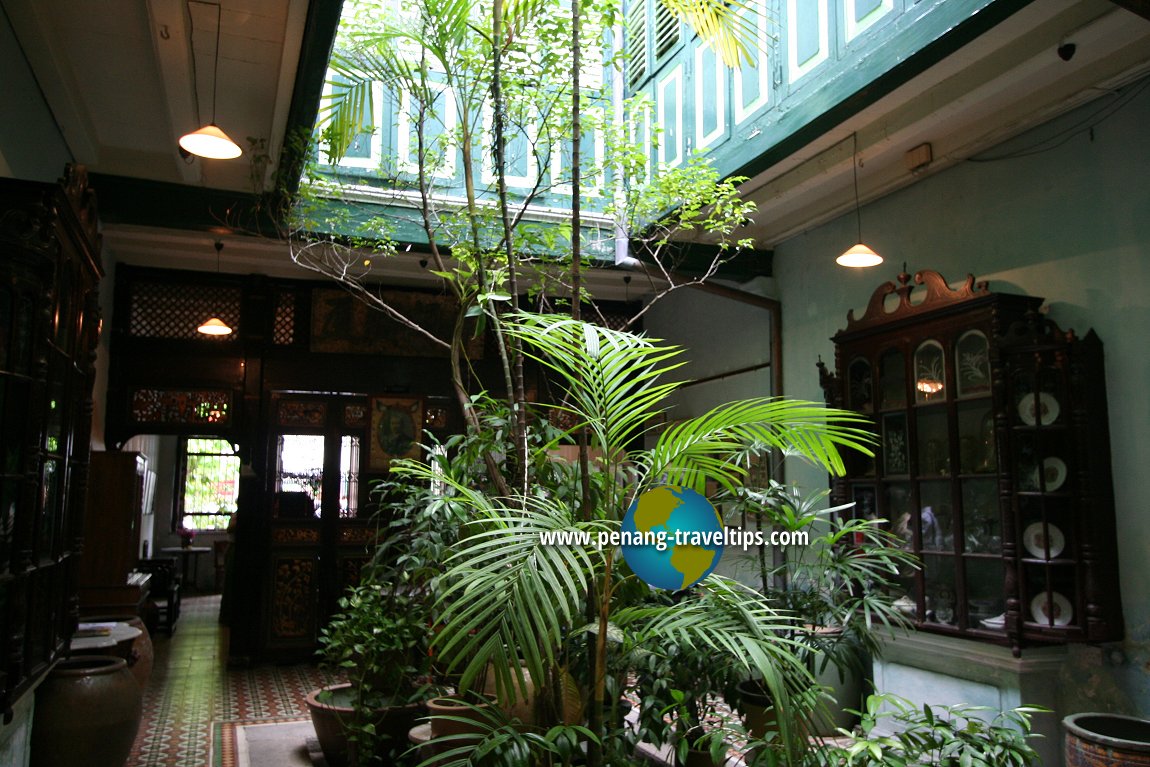 The airwell at the Sun Yat Sen Penang Base (20 November 2010)
The airwell at the Sun Yat Sen Penang Base (20 November 2010)
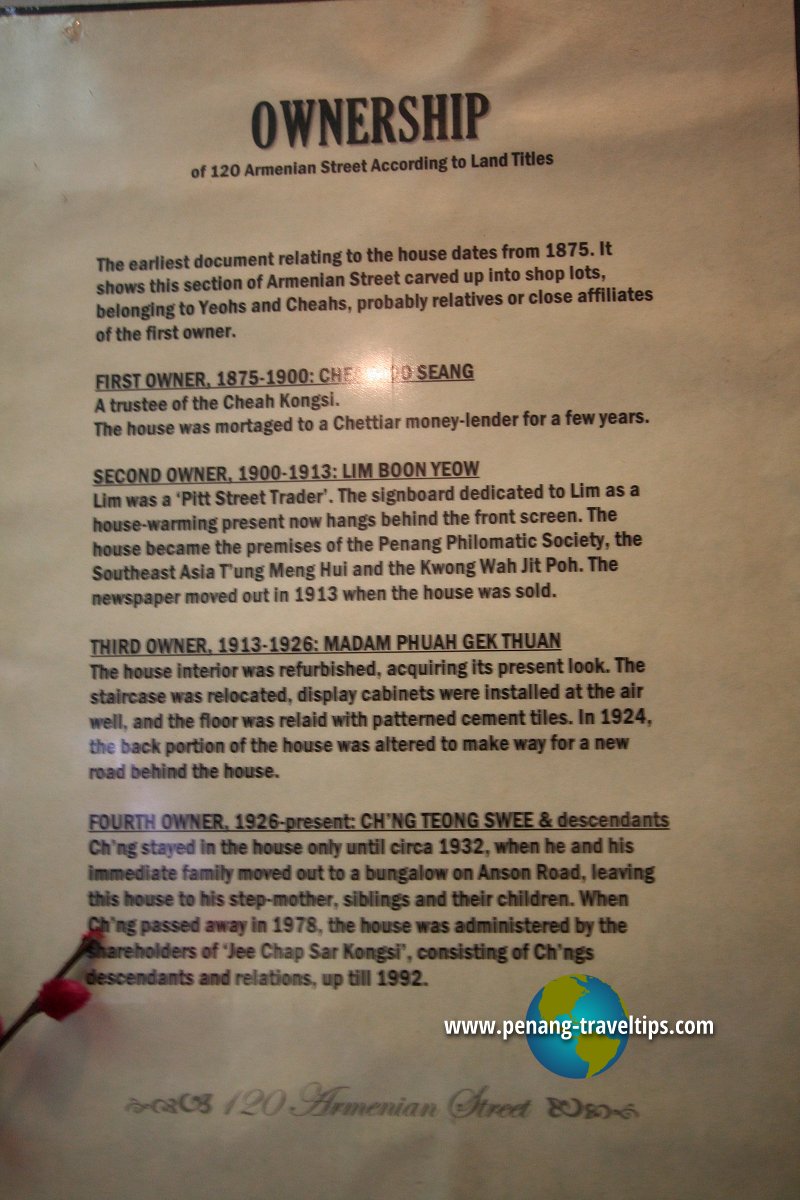 History of the ownership of 120, Armenian Street (20 November 2010)
History of the ownership of 120, Armenian Street (20 November 2010)
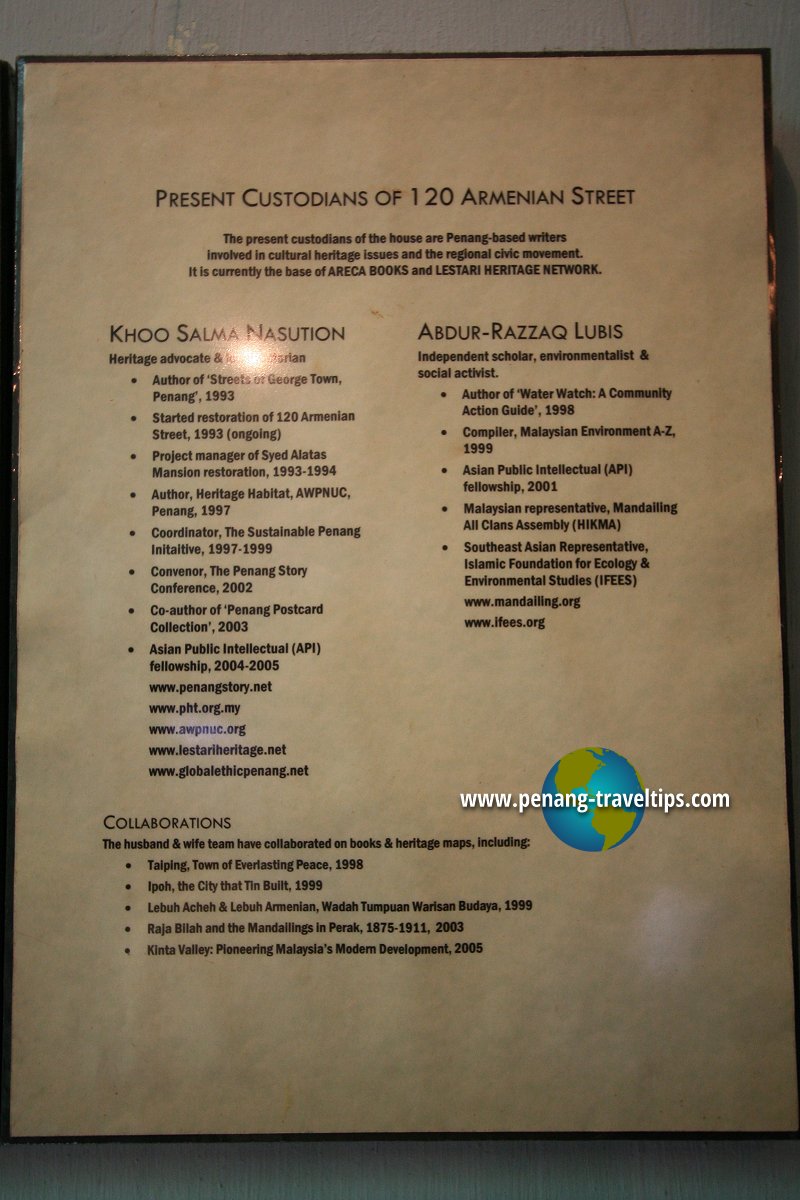 Present custodians of 120, Armenian Street (20 November 2010)
Present custodians of 120, Armenian Street (20 November 2010)
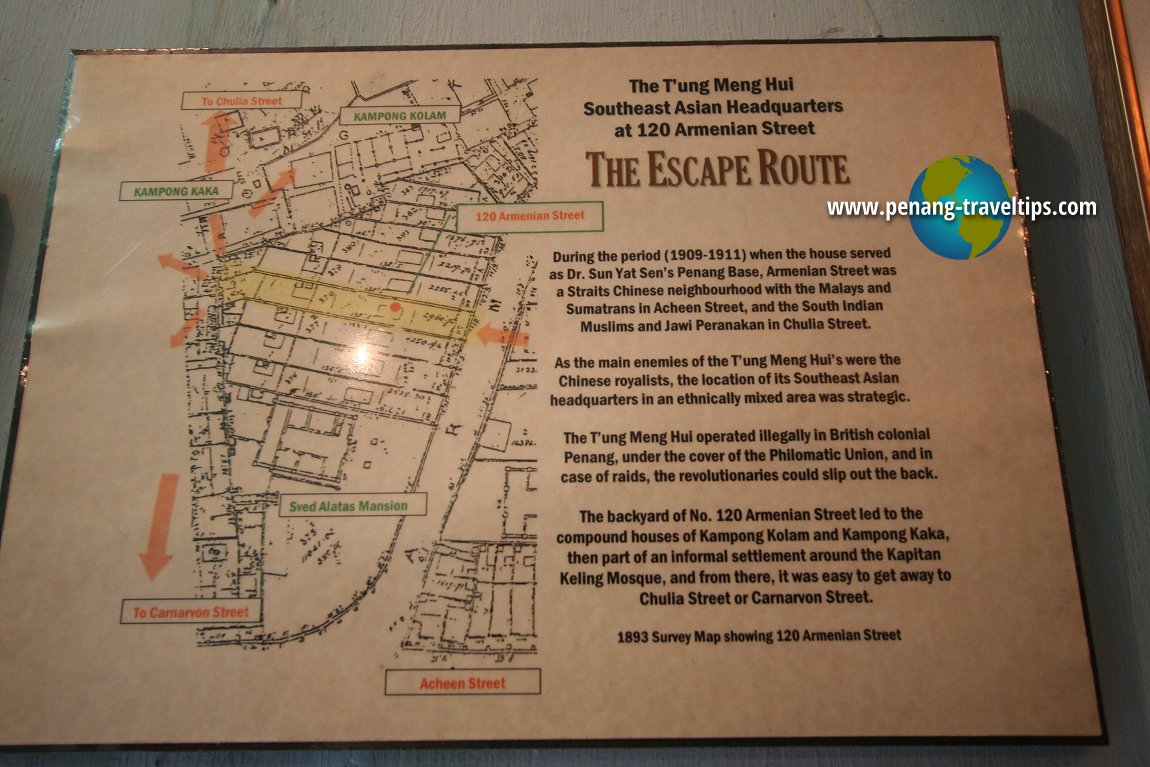 Escape route for T'ung Meng Hui members. (20 November 2010)
Escape route for T'ung Meng Hui members. (20 November 2010)
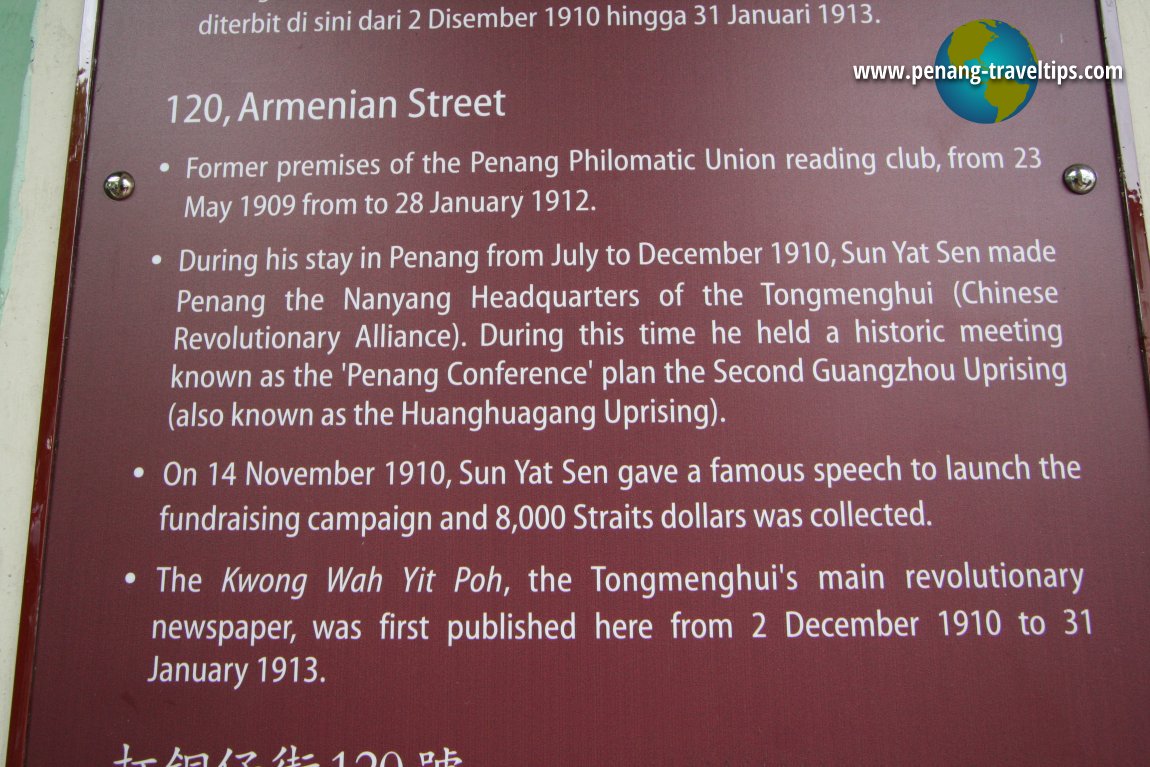 Interpretive plaque on 120, Armenian Street. (20 November 2010)
Interpretive plaque on 120, Armenian Street. (20 November 2010)
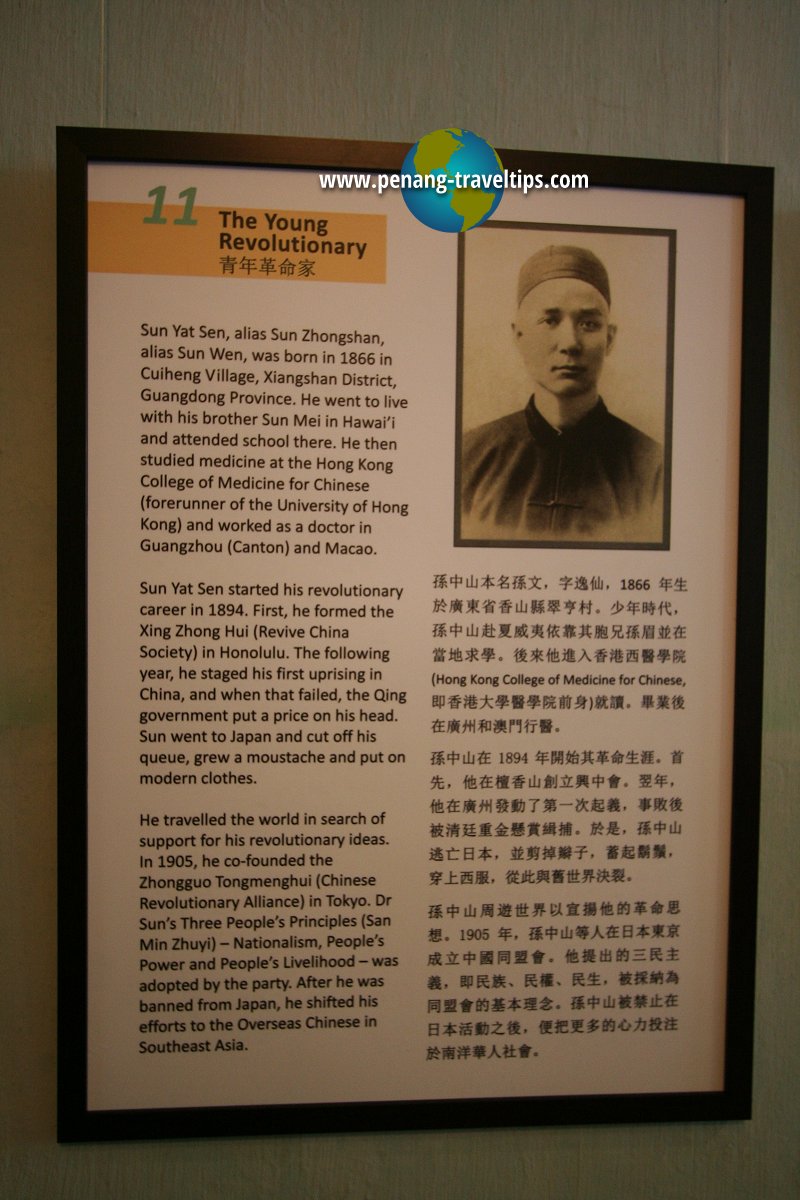 Interpretive plaque on Sun Yat Sen (20 November 2010)
Interpretive plaque on Sun Yat Sen (20 November 2010)
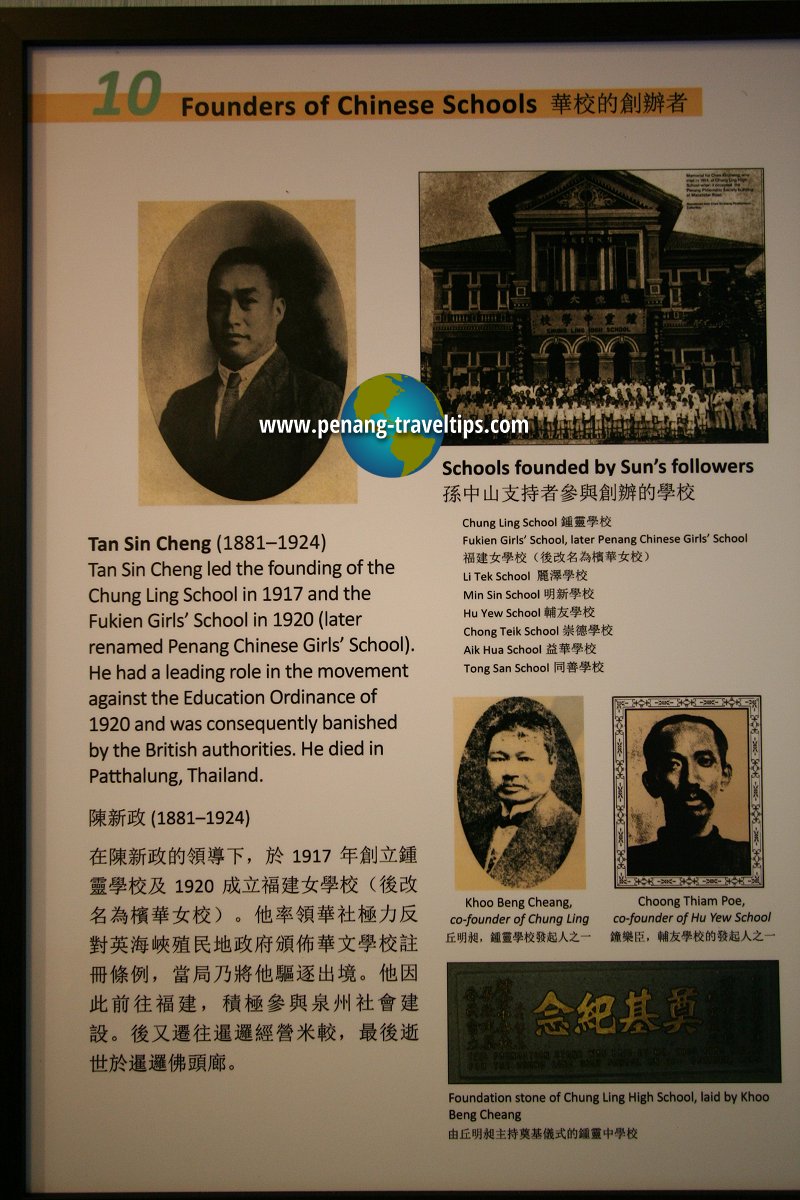 Tan Sin Cheng, founder of Chung Ling School and Fukien Girls' School, was one of the followers of Sun Yat Sen. (20 November 2010)
Tan Sin Cheng, founder of Chung Ling School and Fukien Girls' School, was one of the followers of Sun Yat Sen. (20 November 2010)
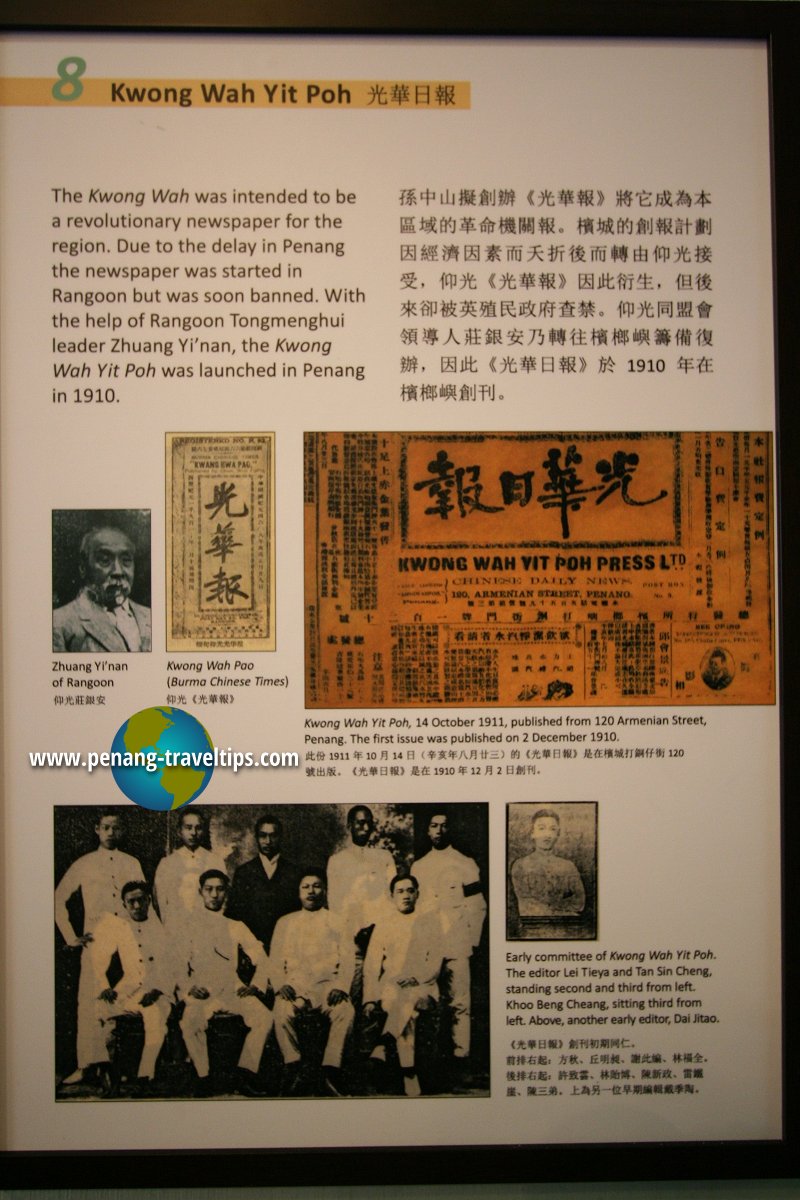 The Chinese newspaper Kwong Wah Yit Poh was established by followers of Sun Yat Sen. (20 November 2010)
The Chinese newspaper Kwong Wah Yit Poh was established by followers of Sun Yat Sen. (20 November 2010)
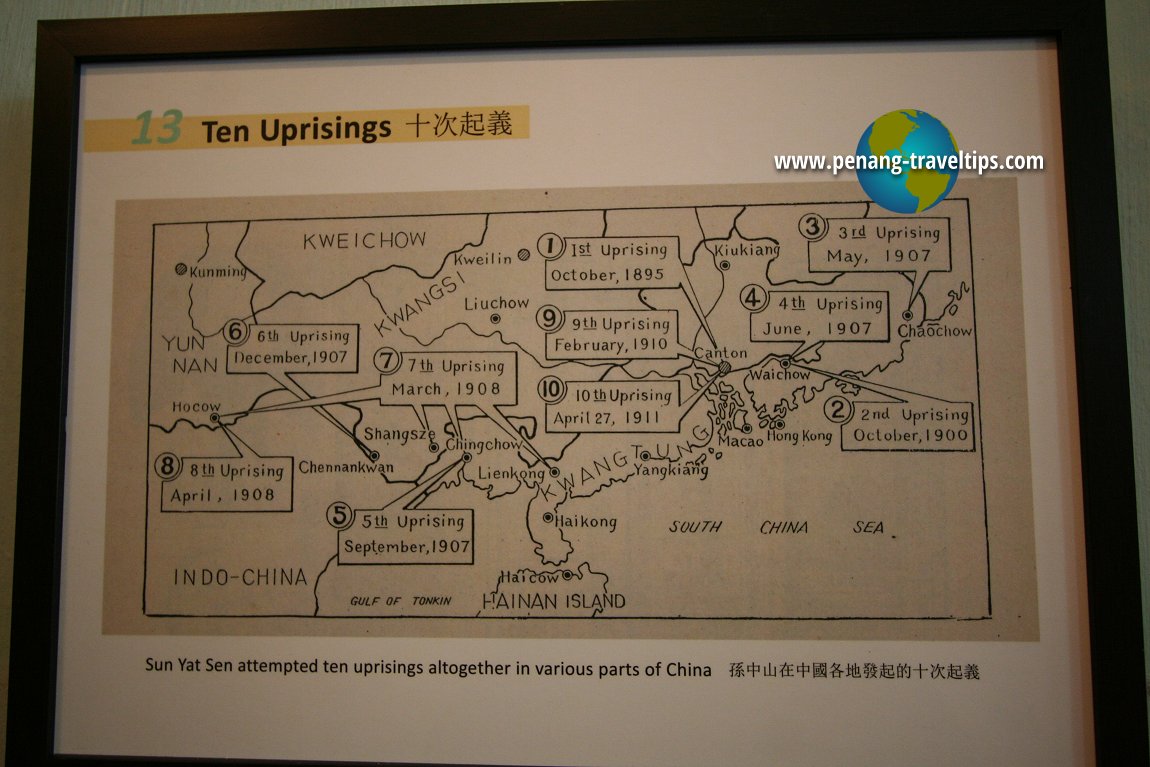 Ten Uprisings organised by Sun Yat Sen in various parts of southern China. (20 November 2010)
Ten Uprisings organised by Sun Yat Sen in various parts of southern China. (20 November 2010)
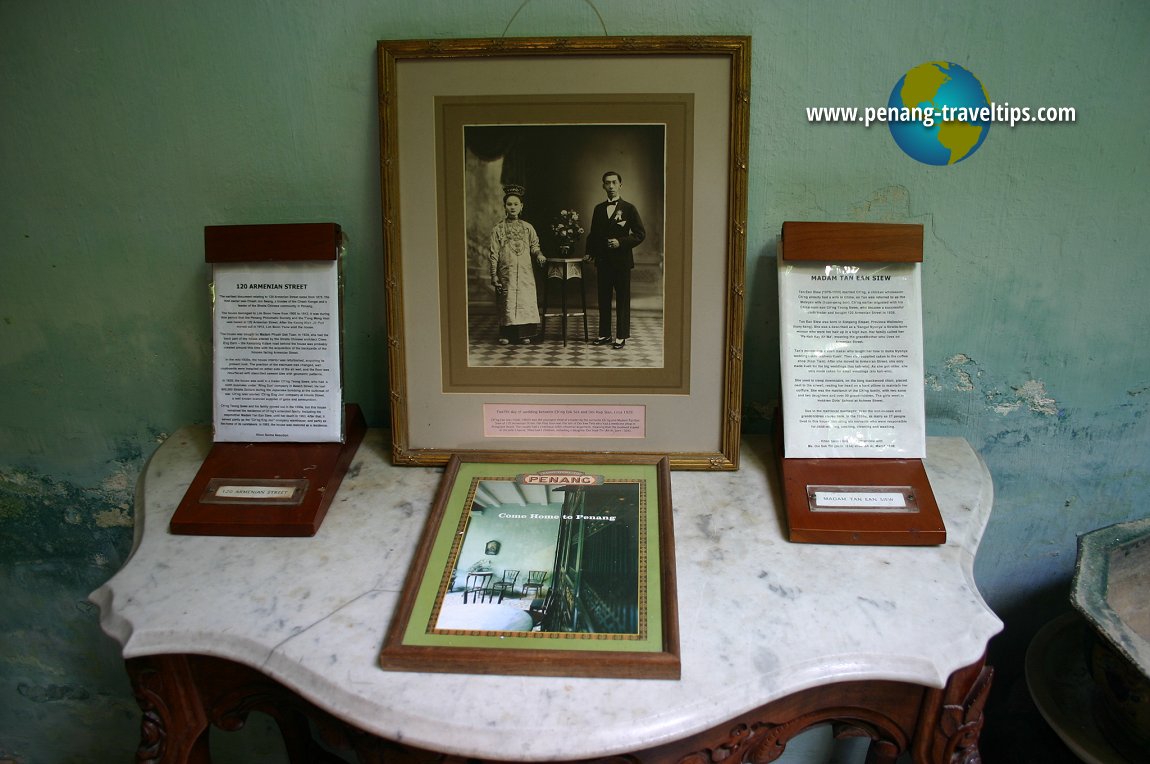 Display at Sun Yat Sen Museum (24 June 2005)
Display at Sun Yat Sen Museum (24 June 2005)
Sun Yat Sen Museum, Penang, is  on the Map of Sun Yat Sen sites
on the Map of Sun Yat Sen sites
Sun Yat Sen Sites
There are many sites in Asia associated with Dr Sun Yat Sen. I list the ones which I have managed to document right here.Details
Nearby Sights
Other Sun Yat Sen Sites
The following are other sites related to Sun Yat Sen that I have described:- Sun Yat Sen Nanyang Memorial Hall
- Sun Yat-sen Memorial Hall, Penang / Penang Sun Yat Sen Centre
- Sun Yat-sen Memorial House, Macau
- Song Qingling Former Residence, Shanghai
Acknowledgement
I wish to thank Khoo Salma Nasution and Loh-Lim Lin Lee for their help in reviewing this feature and verifying the information contained therein.
Footnote
According to Khoo Salma, "Assuming that Dr Sun Yat Sen received support from Cheong Fatt Tze would be jumping to conclusions. Cheong Fatt Tze was given a position by Yuan Shih Kai; although the latter was head of the Republican government, he and Dr. Sun were not exactly on good terms. Before the revolution, there were the royalists, the revolutionaries and a third group, the reformists, who did not support the Empress Dowager but supported the Emperor. I think the picture is complicated because of the many factions."
According to Loh-Lim Lin Lee, Chung Fatt Tze was totally expedient as were most of the [successful] overseas Chinese. Under the Manchus, Cheong Fatt Tze served as Special Trade Commissioner for the Empress Dowager, and he had a queque (pigtail). However, he also worked as well with the move to liberate the country, which explains his early appointment as "Special Economic Advisor to the New Government of China soon after 1911. Incidentally, he was reputed to be one of the first to cut off his queque.
Cheong Fatt Tze's little group on Leith Street was known as very powerful Hakkas. However they also served the Manchu Government as Vice-Consuls (6 in all) - Cheong Fatt Tze, his nephew (no2) Cheah Choon Seng (where MWE is - no3), Leong Fe (across the rd - no 4), Tye Kee Yoon (next to CFTM - no5) and Tye's son (no.6). Cheong Fatt Tze was also Consul General in Singapore.
List of Categories of Sights in Asia; Museums in Penang and Museums in Malaysia

Copyright © 2003-2025 Timothy Tye. All Rights Reserved.

 Go Back
Go Back